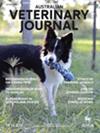Milk provides a readily available diagnostic fluid collected daily or more frequently on an individual animal or herd basis. Milk, as an aggregated sample in bulk tank milk (BTM) represents the status of a herd instead of a single animal. In this review, we examine the potential for milk to predict risks to efficient production, reproductive success, and health on the individual cow and herd level.
For many conditions related to disorders of metabolism including hyperlipdaemia and ketonaemia, improved individual cow milk testing may allow a temporally useful detection of metabolic disorder that can target intervention. However, the extension of these tests to the BTM is made more difficult by the tight temporal clustering of disorder to early lactation and the consequent mixing of cows at even moderately different stages of lactation. Integrating herd recording demographic information with Fourier-transformed mid-infrared spectra (FT-MIR) can provide tests that are useful to identify cows with metabolic disorders. The interpretation of BTM urea and protein content provides useful indications of herd nutrition. These may provide indicators that encourage further investigations of nutritional influences on herd fertility but are unlikely to provide strong diagnostic value. The fat-to-protein ratio has a high specificity, but poor sensitivity for detection of fibre insufficiency and acidosis on an individual cow basis. Selenium, zinc, β-carotene, and vitamin E status of the herd can be determined using BTM.
There appears to be increasing potential for the use of milk as a diagnostic fluid as more in-parlour tests become available for individual cows. However, the BTM appears to have under-utilised potential for herd monitoring.


